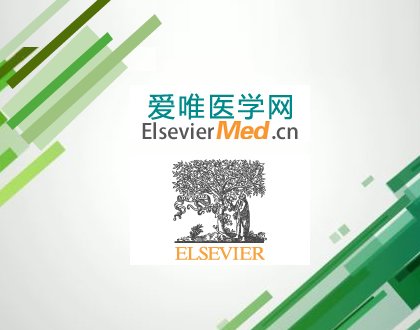美急诊医师可能过量使用质子泵抑制剂
达拉斯——尽管人们对质子泵抑制剂(PPI)的安全性问题日益关切,但2001~2010年期间美国急诊科医生开具PPI的频率仍增加了1倍以上。
主要研究者、华盛顿全国儿童医疗中心的Maryann Mazer-Amirshahi医生在学术急诊医学会(SAEM)年会上指出:“可能需要更多的教育来确保急诊科医务人员熟悉PPI的合理使用指征。我希望这项研究能使大家意识到,由于PPI处方量的增加和对其安全性的担忧,我们应当更加重视此类药物的合理使用。”
|
|
|
Maryann Mazer-Amirshahi医生 |
大量研究已证实,初级保健诊所、消化科门诊和住院机构均存在过量处方PPI的情况,但一直不太清楚急诊科的PPI处方情况。美国疾病预防控制中心的年度全国医院门诊医疗调查,为研究者了解全美急诊科PPI处方情况提供了机会。
Mazer-Amirshahi医生在本次年会上报告了对2001~2010年调查数据的回顾性分析。在这10年间,全美成人急诊就医数从2010万/年攀升至2830万/年。与此同时,成年患者PPI处方率从2001的3%增加到2010年的7.2%。“2010年的2830万次急诊就医中有7.2%开具了PPI处方,我认为这是个惊人的数字。”
在PPI处方率增加1倍以上的同时,替代药物的使用率却在下降。组胺2阻断剂的使用率从2001年的6.8%下降到2010年的5.7%,抗酸剂的使用率从7.2%下降到5.5%。
所有类型医院的急诊科PPI处方率均在上升:非营利性医院、营利性医院,以及公立医院。全美所有地区和所有医保类型(包括自费)患者的急诊科PPI处方率均在上升。值得注意的是,教学医院的急诊科PPI处方量增加更明显,在这10年间增加了276%,而非教学医院同期仅增加118%。急诊科主治医生开具的PPI处方增加了122%,急诊科住院医生的PPI处方量增加了185%,急诊科中级职称医生的PPI处方量增加了345%。
2001年,年龄≥65岁的急诊科患者有3.3%接受了PPI处方。而到2010年时,这一数字已升至6.8%,增加了104%。这一趋势尤其令人担忧,因为老年患者是发生PPI相关不良事件风险最高的群体,这些不良事件包括骨质疏松性骨折、低镁血症、药物相互作用、支架内血栓形成、艰难梭菌性结肠炎,以及社区获得性肺炎等。
在从急诊科接受PPI处方的患者中,大约50%并没有明确的胃肠主诉,提示急诊科开具的PPI处方有很多并不符合适应证。
Mazer-Amirshahi医生观察发现,在由美国内科委员会(ABIM)发起的“明智选择行动”中,PPI处方受到了特殊的关注。ABIM建议在开具PPI处方之前进行用药方案审查,以避免发生药物相互作用。另外很重要的一点是,在开具超过1周时间的PPI处方之前,应当确定患者是否合并骨质疏松症。还有其他一些原因提示急诊科医生,在开具PPI处方之前应当三思。
“在急诊科,我们通常希望迅速缓解患者的症状。但PPI起效较慢,在用药12~24小时之后才能生效,所以在很多情况下采用起效更快、费用更低的H2阻断剂是更好的选择。”
Mazer-Amirshahi医生报告称无相关利益冲突。
爱思唯尔版权所有未经授权请勿转载
By: BRUCE JANCIN, Internal Medicine News Digital Network
DALLAS – The frequency at which U.S. emergency department physicians prescribed proton pump inhibitors more than doubled during 2001-2010, despite mounting safety concerns surrounding this class of medications.
"More education may be needed to ensure ED providers are familiar with the appropriate indications for PPI use. The big thing that I’m hoping will be taken away from this study is that because of the increase in prescribing PPIs [proton pump inhibitors] and the concerns about safety, that we’re going to be more vigilant in educating ourselves and each other about appropriate use of these medications," Dr. Maryann Mazer-Amirshahi said at the annual meeting of the Society for Academic Emergency Medicine.
Overprescribing of PPIs has been well documented in primary care offices, gastroenterology clinics, and inpatient settings. Up until now, however, prescribing patterns in the ED haven’t been well documented. The Centers for Disease Control and Prevention’s annual National Hospital Ambulatory Care Survey provided an opportunity to do so via a weighted nationally representative sample of ED visits, explained Dr. Mazer-Amirshahi of Children’s National Medical Center, Washington.
She presented a retrospective analysis of survey data for the years 2001-2010, during which the annual number of adult ED visits climbed from 20.1 million to 28.3 million. Meanwhile, PPI prescribing increased from 3% of adult patients in 2001 to 7.2% in 2010.
"I think that’s pretty significant when you’re talking about more than 7% of 28 million ED visits every year," she commented.
While PPI prescribing more than doubled during the study years, the use of alternative medications declined. Histamine2 blocker use dropped from 6.8% in 2001 to 5.7% in 2010, while the use of antacids decreased from 7.2% to 5.5%.
PPI prescribing rose in EDs in hospitals of all types: nonprofit, for-profit, and government. It increased in all regions of the country and across all payer types, including self-payment. Of note, the number of ED prescriptions increased to a greater extent in teaching hospitals, with a 276% increase, as compared with a 118% increase in nonteaching hospitals. Prescribing of PPIs by attending ED physicians climbed by 122%, by 185% by emergency medicine residents, and by 345% by mid-level providers.
In 2001, 3.3% of ED patients aged 65 years or older received a PPI. By 2010, this figure had climbed to 6.8%, a 104% increase. This trend is of particular concern because the elderly are the group at highest risk of PPI-related adverse events, including osteoporotic fractures, hypomagnesemia, drug-drug interactions, stent thrombosis, Clostridium difficile colitis, and community acquired pneumonia, Dr. Mazer-Amirshahi noted.
Roughly half of patients who got a PPI in the ED during the study years did not have a clear gastrointestinal complaint as the primary reason for their visit, suggesting that much of the ED prescribing of PPIs was not for an approved indication, she continued.
Dr. Mazer-Amirshahi observed that PPI prescribing has received special attention in the Choosing Wisely Program sponsored by the American Board of Internal Medicine, which recommends conducting a drug regimen review before prescribing a PPI in order to avoid drug-drug interactions. It’s also important to know whether a patient has osteoporosis before prescribing a PPI for longer than a few weeks. And there are additional reasons to think twice before prescribing a PPI in the ED.
"In the ED, we generally want to give our patients rapid symptom relief. PPIs have a delayed onset of action. They take 12-24 hours to take effect, so in many situations we might be better off giving an H2 blocker, which acts faster and is less costly," she said.
Dr. Mazer-Amirshahi reported having no financial conflicts regarding her study.
欢迎关注Elseviermed官方微信

上一篇: 局部他莫昔芬治疗对导管原位癌有效
- 您可能感兴趣的文章
-
- 他们推荐了的文章
-
- •翟晓红 顶文章 【影像诊断】肺癌:多灶性肺癌 20小时前
- •翟晓红 顶文章 影像诊断--肺癌:腺癌 20小时前
- •翟晓红 顶文章 【病例】胆汁淤积婴儿合并肾上腺钙化一例报道 2016-04-04 21:22:45
- •翟晓红 顶文章 【病例挑战】一例罕见的胃内溃疡性肿物 2016-04-04 21:16:36
- •翟晓红 顶文章 【病例挑战】阑尾扩张查因:你猜得到么? 2016-04-04 21:13:30




